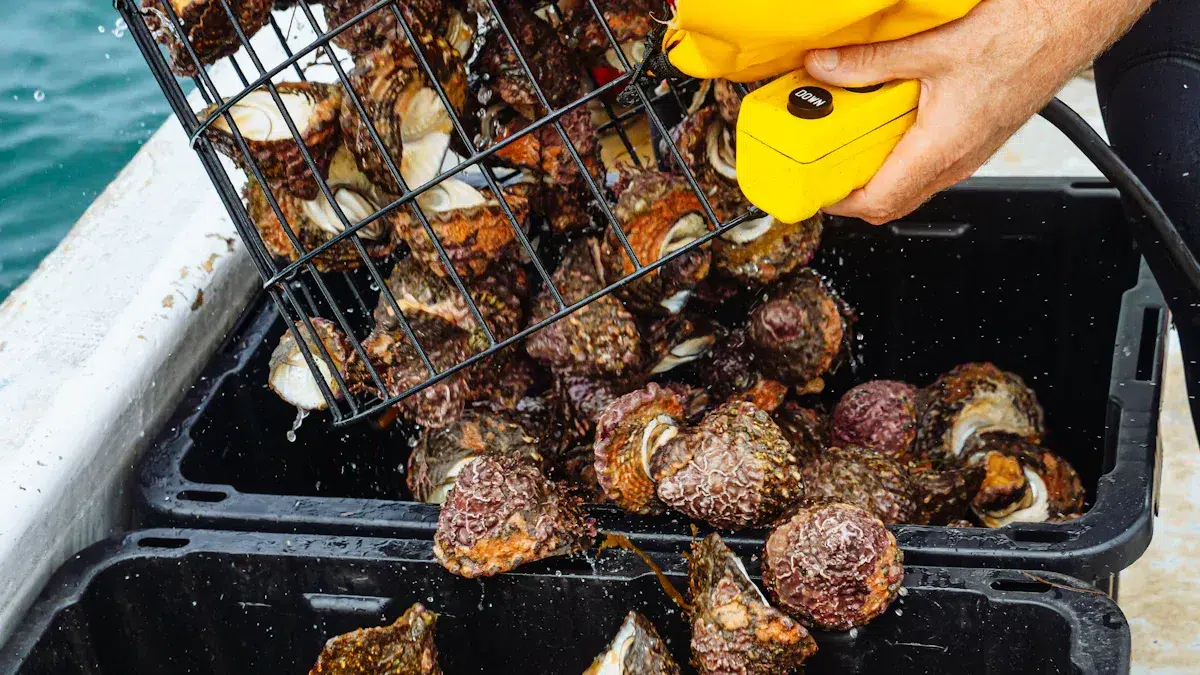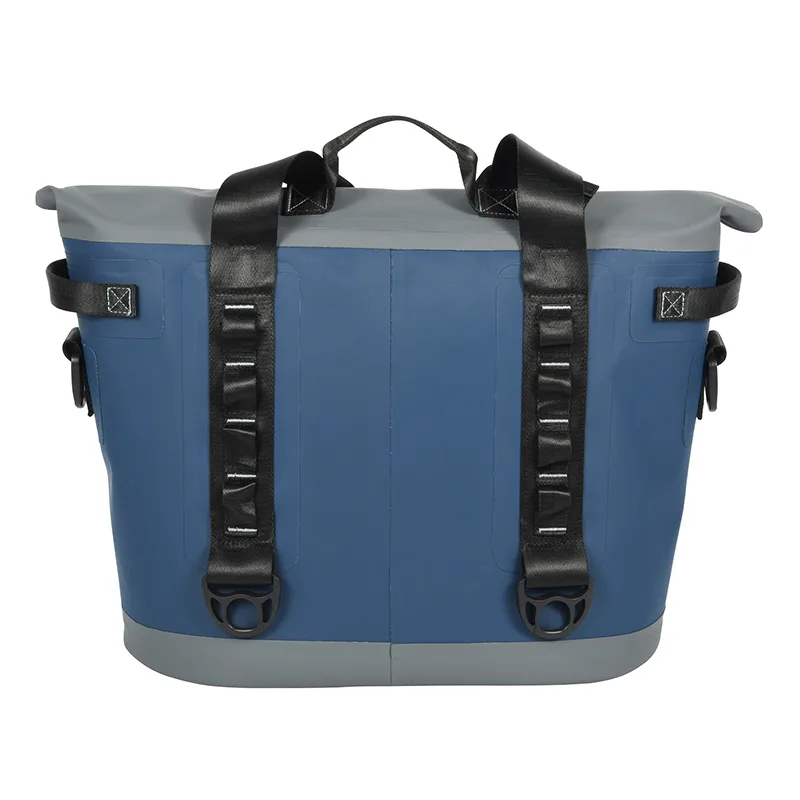
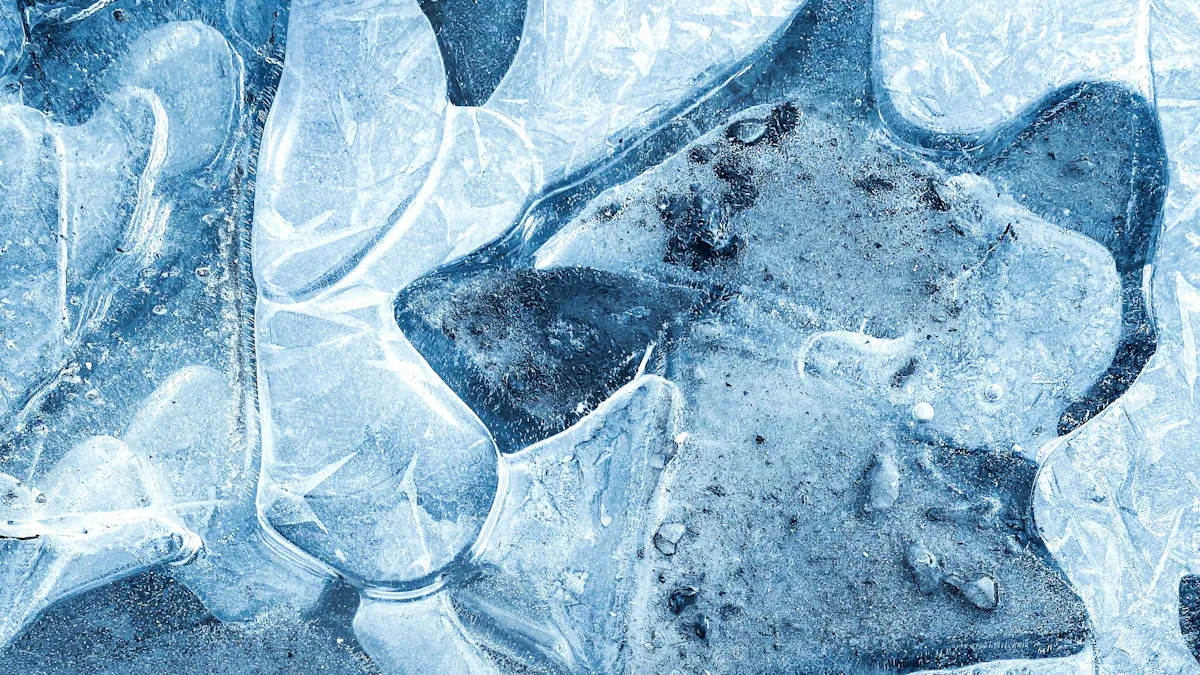
If you want the best cooling for your outdoor adventure, an ice bag for cooler often gives you more flexibility and fast chilling, while ice packs keep things neat and reusable. You’ll find both options work well for coolers during camping, fishing, and other outdoor trips. Many people use an ice bag for cooler to keep food safe below 40°F on summer trips, whether you’re packing for a picnic or heading out for a weekend camping escape. Your choice depends on how you like to travel and what makes your trips easier.
Ice Bag for Cooler vs. Ice Packs
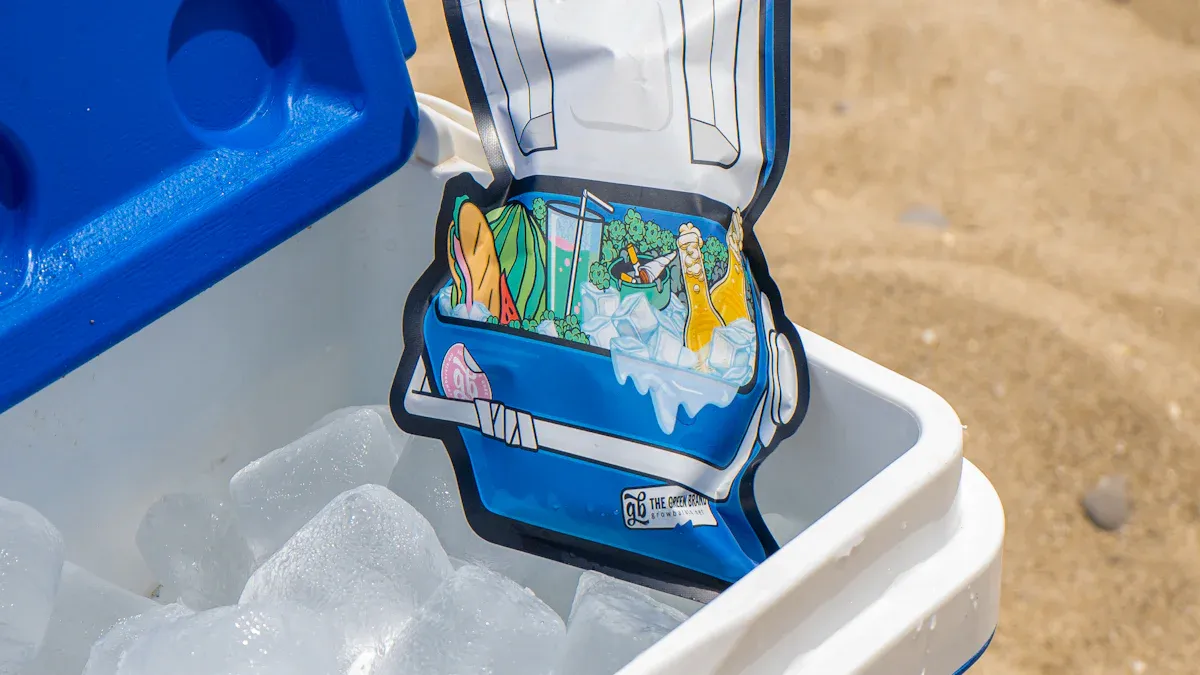
How Ice Bags Work
When you grab an ice bag for cooler, you’re using one of the oldest and most reliable ways to keep things cold. You fill the bag with ice, seal it up, and place it inside your cooler. The ice absorbs heat from the food and drinks, keeping everything chilly. As the ice melts, it keeps the temperature inside the cooler low for a long time. This happens because ice needs to absorb a lot of heat to turn into water, which helps your cooler stay cold even on hot days.
You’ll notice that an ice bag for cooler can fit into different spaces inside your cooler. Crushed ice fills gaps around your food, while larger blocks of ice last longer but take up more space. The melting ice creates cold water, which can help keep everything evenly chilled. However, you need to make sure your cooler can handle the extra water, especially if you’re using a soft cooler without a drainage port.
KUER’s ice bags stand out because of their rugged construction and advanced manufacturing. The company uses rotational molding to make sure each ice bag for cooler is tough and durable. You get high insulation performance, so your food and drinks stay cold for hours. KUER’s research and development team focuses on making ice bags that are easy to carry, pack, and clean. You can rely on their quality and innovation, whether you’re heading out for a picnic or a weekend camping trip.
Tip: If you want to maximize the cooling power of your ice bag for cooler, try placing it at the bottom of your cooler and layering your items on top. This helps keep everything cold and makes the most of the ice’s cooling effect.
How Ice Packs Work
Ice packs give you a modern twist on keeping things cold. You freeze them ahead of time, then place them in your cooler. Ice packs use special materials inside, like gel or liquid, that absorb heat as they melt. This process keeps your cooler cold without the mess of melting ice. The materials in ice packs, such as polyethylene, nylon, and gel-based substances, help them stay frozen longer and keep your food safe.
You’ll find that ice packs come in many shapes and sizes. Hard ice packs have a tough plastic shell and a liquid center, making them strong and great for stacking. Soft ice packs use flexible gel, so you can fit them into tight spaces in your cooler. Some ice packs for car coolers use gel that stays frozen for up to 48 hours, giving you long-lasting cooling on road trips.
The way ice packs work is similar to ice, but with a few extra benefits. They absorb heat as they melt, keeping the temperature inside your cooler steady. Experiments show that the melting process of ice packs helps maintain a low temperature for a long time. The airflow inside the cooler also helps spread the cold, so everything stays evenly chilled.
KUER’s ice packs shine because of their focus on quality and performance. The company uses advanced materials and designs to make sure each ice pack is durable, easy to use, and effective. You get water-resistant materials, compact designs, and strong insulation. KUER’s commitment to research and development means you always get the latest innovations, like improved cold retention and flexible shapes that fit any cooler.
Here’s a quick comparison to help you see the differences:
| Feature | Ice Bag for Cooler | Ice Packs |
|---|---|---|
| Cooling Mechanism | Melting ice absorbs heat | Gel/liquid absorbs heat |
| Mess | Can create water as ice melts | No water mess |
| Reusability | Single-use or limited reuse | Reusable many times |
| Fit in Cooler | Flexible, fills gaps | Various shapes for easy packing |
| Durability | High with KUER’s rugged design | High with tough or flexible shells |
Note: Leading brands now offer eco-friendly ice packs made from compostable or recyclable materials. Some even have smart features like temperature sensors, so you can track your cooler’s temperature on your phone.
KUER’s ice bags and ice packs both score high in insulation, convenience, and durability. The company’s years of experience and focus on quality make their products a smart choice for anyone who wants reliable cooling for summer adventures.
Cooling Performance in Coolers
Cooling Duration
When you pack your cooler for a summer trip, you want your food and drinks to stay cold as long as possible. The duration of cooling depends on several things. First, the type of cooler you use matters a lot. Rotomolded coolers hold cold longer than injection-molded ones because they have thicker insulation. If you use a high-quality cooler, you can expect your ice packs or ice bag to last much longer.
The kind of ice you use also changes how long things stay cold. Solid blocks of ice last longer than crushed ice because they melt slower. Ice packs, especially the ones filled with gel, can keep your cooler cold for many hours. Some ice packs even stay frozen for up to 48 hours, which is great for long trips. If you use frozen water bottles, you get a similar effect, and they can sometimes last even longer than regular ice packs.
Here are some things that affect how long your ice packs or ice bag will keep things cold:
- The insulation quality of your cooler
- The outside temperature
- How much ice or how many ice packs you use
- How full you pack your cooler (less empty space is better)
- How often you open the cooler
- The starting temperature of your food and drinks
- How well the cooler seals
You can see from this table how different choices make a difference:
| Factor | What Happens |
|---|---|
| Cooler insulation type | Rotomolded coolers keep things cold longer than injection-molded coolers |
| Ice form | Solid ice blocks last longer than crushed ice or ice-water mixtures |
| Ice packs vs. frozen bottles | Frozen water bottles can last as long as the best ice packs and cost less |
| Packing strategy | Tightly packed coolers with fewer air gaps keep cold longer |
| Cooler opening frequency | Opening the cooler less often keeps the cold inside |
If you want to get the best duration of cooling, try these tips:
Tip: Pre-chill your cooler and your ice packs before you pack them. Use large ice packs or solid ice blocks. Fill your cooler as much as you can, and keep it closed as much as possible.
Temperature Consistency
Keeping a steady temperature inside your cooler is just as important as how long it stays cold. You want your food to stay below 40°F to keep it safe. Ice packs help with this because they release cold slowly and evenly. When you use several ice packs and spread them around your food, you get a more even chill. This means you don’t get warm spots or sudden temperature jumps.
Some coolers, especially those with chipped ice, can have temperature swings. The temperature might go above 6°C (about 43°F) for a few hours before dropping again. This can be risky if you have food that needs to stay cold. Ice packs, especially high-quality ones, do a better job of keeping the temperature steady. They work well in both small and large coolers.
Here are some ways to keep your cooler’s temperature steady:
- Use multiple ice packs and place them on top, bottom, and sides of your food
- Choose a cooler with a tight seal and thick insulation
- Avoid opening the cooler too often
- Pack your cooler full to reduce air gaps
You can see that ice packs give you more control over temperature consistency. They don’t melt into water, so you don’t have to worry about soggy food. You can reuse them, and they fit into different spaces in your cooler. This makes them a favorite for many people who want reliable cooling performance.
Note: If you want the best results, use a mix of ice packs and solid ice blocks. This combo gives you long-lasting cold and steady temperatures, even on the hottest days.
Mess and Cleanliness
Water Leakage
When you pack your cooler, you want everything to stay dry and fresh. If you use an ice bag filled with loose ice, you will notice water starts to collect at the bottom as the ice melts. This water can leak out if your cooler is not sealed well, and it can make your sandwiches or snacks soggy. You might even find your cooler dripping if you tip it or carry it sideways.
Ice packs work differently. They have a sealed shell that keeps all the cold inside. As they warm up, they do not make a mess because the water stays locked in. You do not have to worry about leaks or wet food. If you want to keep things dry, ice packs or sealed bags of ice are the best choice. Some people still like using loose ice because the cold water helps keep everything at 32°F, but you need to protect your food from getting wet. Try using watertight containers or placing your food above the ice water.
Tip: If you use loose ice, pack your food in sealed containers or bags. This keeps everything dry, even if water collects at the bottom.
Food Safety
Keeping your food safe is super important, especially on hot summer days. Bacteria can grow fast if your cooler gets warmer than 40°F. You want to keep your food cold to stop spoilage and foodborne illness. Both ice bags and ice packs help you do this, but you need to use enough of them to fill your cooler and keep the temperature low.
Here are some easy ways to keep your food safe in the cooler:
- Pack perishable foods straight from the fridge or freezer.
- Fill any empty space with extra ice or ice packs.
- Separate raw meat, poultry, and seafood from other foods.
- Use watertight containers to keep food away from melting ice water.
- Open your cooler only when you need to.
- Use a thermometer to check the temperature inside.
- For long trips, use two coolers: one for now, one for later.
- Keep your cooler in the shade or cover it with a towel for extra insulation.
Ice packs are safe when you use them right, but do not put them directly on your skin for too long. If an ice pack breaks, throw it away and keep it away from kids and pets. Always check your cooler before you leave to make sure everything is packed safely and stays cold.
Note: A full cooler stays cold longer and keeps your food safer. Always pack it tight and check that your ice or ice packs are frozen solid before you go.
Reusability and Environment
Single-Use vs. Reusable
When you pack your cooler, you might wonder if you should use single-use ice bags or reusable ice packs. Single-use ice bags are easy to grab and toss in, but you throw them away after one trip. This creates more trash and adds to landfill waste. Most single-use ice bags use thick plastic film. Some stores accept this plastic for recycling, but you usually cannot put it in your curbside bin. The gel inside these bags is not recyclable, so you have to dry it out and put it in the trash.
Reusable ice packs give you a better option. You can freeze them again and again. After your trip, just pop them back in the freezer. You do not need to buy new ones every time. This saves you money and cuts down on waste. Many people even donate their extra reusable ice packs to local groups. For example, some community programs collect hundreds of pounds of used ice packs each month. They use them to keep food cold for deliveries, which helps others and keeps plastic out of landfills.
If you want to help the planet and save money, choose reusable ice packs for your cooler. You will make less trash and get more use from each pack.
Eco Impact
You make a big difference when you pick reusable products. Throwing away single-use ice bags adds to plastic pollution. These bags often end up in landfills or as litter. Even if you try to recycle them, most recycling centers do not accept them. The gel inside can also harm the environment if not handled right.
Reusable ice packs help lower your environmental footprint. When you reuse them, you cut down on the need for new plastic. Community programs show how powerful this can be. By collecting and reusing ice packs, they keep hundreds of pounds of plastic out of the trash every month. This saves resources and helps local food programs deliver meals safely. You can also upcycle old ice packs for things like pet beds or padding, but the best way to help is to keep using your reusable ice packs as long as possible.
Every time you reuse an ice pack, you help protect the environment and support your community. Small choices add up to a big impact!
Convenience and Use
Packing a Cooler
Packing your cooler the right way can make your trip much easier. You want everything to stay cold and fresh, but you also want to fit as much as possible. Ice packs help you do this. When you freeze ice, it becomes hard and keeps its shape. You might find it tough to fit big blocks of ice around your food or drinks. Sometimes, you have to leave out items because the ice just will not fit.
Gel ice packs change the game. Even when frozen, they stay a little flexible. You can bend them and fit them around bottles, snacks, or even odd-shaped containers. This flexibility lets you pack your cooler tighter. You fill up empty spaces, so cold air moves better and everything stays chilled. You also avoid the mess that comes with melting ice. If you want convenience and hassle-free cooling, ice packs are the way to go.
Tip: Place ice packs on the bottom and sides of your cooler. Add your food and drinks, then put more ice packs on top. This keeps everything cold from every angle.
Storage and Refreezing
After your trip, you want to get your ice packs ready for next time. Storing and refreezing them is simple if you follow a few steps:
- Store your ice packs in a clean, dry spot. This keeps mold and bacteria away.
- Keep them away from sharp things. Make sure the packs stay sealed when you are not using them.
- Check your ice packs for leaks or tears. If you see damage, replace the pack.
- Wipe your ice packs with a damp cloth and mild soap. Rinse and dry them before you put them away.
- Freeze your ice packs for 2 to 4 hours, or as the label says. Do not over-freeze, or they might get too stiff.
- Use different ice packs each time. This helps them last longer.
- Store your ice packs away from sunlight or heat. This keeps them from breaking down.
Ice packs make it easy to get ready for your next adventure. You do not have to buy new ones every time. Just clean, freeze, and go. You get reliable, hassle-free cooling every trip.
Cost Comparison
Upfront Cost
When you shop for cooler options, you probably notice a big difference in price. Ice bags for coolers usually cost less at the start. You can grab a bag of ice from the store for just a few dollars. Cooler bags that use ice bags often range from $10 to $50. If you want a standard cooler box that works with ice packs, you might pay between $40 and $150. Premium cooler boxes with advanced ice pack features can cost even more, sometimes up to $300.
Here’s a quick look at the average upfront costs:
| Item Type | Average Upfront Cost Range |
|---|---|
| Cooler Bags | $10 to $50 |
| Standard Cooler Boxes (Ice Packs) | $40 to $150 |
| Premium Cooler Boxes (Ice Packs) | $200 to $300 |
You can see that starting with ice bags is easier on your wallet. If you only need a cooler for a short trip or a one-time event, this option makes sense. You spend less money up front and get the cooling you need right away.
Long-Term Value
Now, let’s talk about what happens over time. If you use ice bags for every trip, you have to buy new ice each time. The cost adds up fast, especially if you love summer adventures. You also have to deal with melting ice, water at the bottom of your cooler, and the hassle of draining it after every use.
Reusable ice packs work differently. You pay more at first, but you can use them again and again. After your trip, just refreeze the packs and they’re ready for next time. You don’t have to keep buying ice, so you save money in the long run. Ice packs also keep your food dry and your cooler clean. Over time, this makes your life easier and your wallet happier.
If you want the best value for many trips, reusable ice packs are a smart investment. You pay more at the start, but you save money and avoid mess with every use.
Best for Camping and Travel
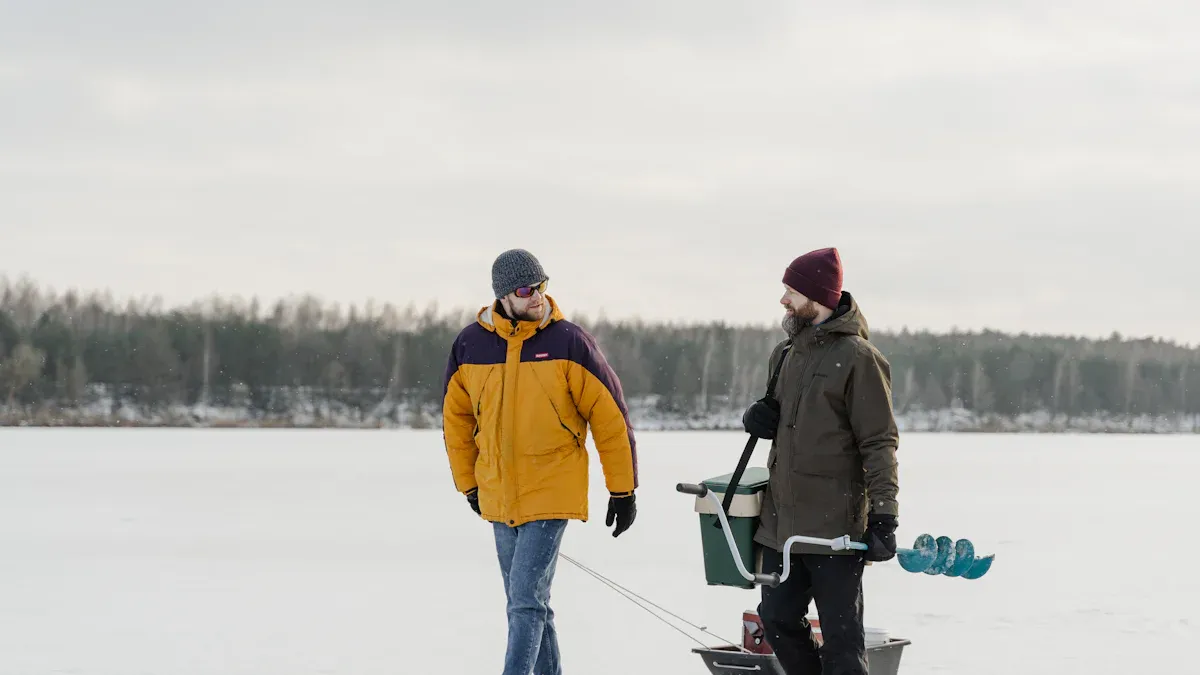
Camping
When you plan a camping trip, you want your food and drinks to stay cold for days. Many experts and campers say hard-sided, rotomolded coolers work best for camping. These coolers keep ice frozen longer and stand up to rough outdoor use. You can trust them to handle bumps, drops, and even curious wildlife. Some coolers even have bear resistance, which is important for camping in wild areas.
Here’s what you should look for when picking a cooler for camping:
- Strong, rotomolded construction for long-lasting use
- Thick insulation to keep things cold for at least four days
- Bear-resistant features for safety in outdoor settings
- Easy-to-carry handles or wheels for moving your cooler around camp
- Useful extras like drain plugs and lockable lids
You want a cooler that fits your group size and the length of your camping trips. Bigger coolers work well for longer outdoor adventures or larger groups. Many campers also use ice packs with their coolers. Ice packs help keep everything dry and cold, so you don’t have to worry about soggy food. If you want the best results, use both ice packs and solid ice blocks together. This combo gives you steady cooling and less mess during your camping adventure.
Tip: Always pre-chill your cooler and ice packs before your camping trip. This helps your food and drinks stay cold even longer.
Road Trips
Road trips can last a few hours or several days. You need a cooling option that fits your travel style. Here’s a quick look at how ice packs and ice bags compare for road trips:
| Aspect | Ice Packs (Pros) | Ice Packs (Cons) | Ice Bags (Pros) | Ice Bags (Cons) |
|---|---|---|---|---|
| Usage | No mess, easy to pack, saves space | Need to freeze first | Easy to buy, refill on the go | Melts, can make food soggy |
| Cooling Duration | Stays cold up to 24 hours, steady temp | Can get damaged | Block ice lasts long | Melts fast, less effective later |
| Cleanliness | Leak-proof, less cleanup | Must avoid punctures | Good for chilling drinks | Needs draining |
| Reusability | Use for years, eco-friendly | None | Cheap upfront | Costs add up over trips |
| Suitability | Great for multi-day trips, dry food | None | Good for short trips | Not for long trips |
Ice packs work best for long road trips and frequent outdoor travel. They keep your cooler clean and your food dry. If you want to chill drinks quickly or need ice for a short stop, ice bags are handy. Many travelers use both for the best results on their trips.
Picnics
For a picnic, you want something simple and reliable. Gel ice packs shine here. They keep your food and drinks cold for hours, even on hot outdoor days. You can fit them easily into cooler bags, leaving more space for snacks and drinks. Ice packs do not leak, so you avoid messy water at the bottom of your bag. They are reusable and eco-friendly, making them a smart choice for outdoor picnics. You get steady cooling and less cleanup, so you can focus on enjoying your outing.
Note: Ice packs keep your picnic food fresh and safe, so you can relax and have fun during your outdoor adventure.
KUER’s Tips for Coolers
Choosing Ice Bags
You want to pick the right ice bags for your trips. If you plan a long adventure, go for ice bags with high ice retention. These keep your food and drinks cold for up to 36 hours or more. For big coolers or multi-day trips, combine ice bags with regular ice. This combo gives you longer cooling and helps everything stay fresh. Always check the size of your cooler. Large ice bags work best for big coolers, while smaller bags fit better in compact coolers. Pre-chill your cooler before adding ice bags. This simple step boosts cooling efficiency and helps your ice last longer.
Tip: Layer your ice bags at the bottom, then add your food and drinks. This setup keeps everything cold and prevents warm spots.
Choosing Ice Packs
Ice packs are perfect for short trips or daily use. Compact ice packs freeze quickly and save space in your cooler. If you care about the environment, choose high-quality reusable ice packs made from eco-friendly materials. These packs last for years and help reduce waste. For large coolers, use several smaller ice packs instead of one big one. This lets you layer them for even cooling. Some ice packs, like Engel or Yeti, offer long-lasting cold for up to 36 hours. Quick-freezing ice packs work well if you need to get ready fast for last-minute trips. Always clean your reusable ice packs after each use and store them flat in the freezer. This keeps them in top shape for your next adventure.
Maximizing Cooling
You can get the most out of your cooler by following a few easy steps:
- Start with a cold base layer using ice packs or ice bags.
- Pack heavy drinks next, filling gaps to cut down on air space.
- Add fruits, snacks, or veggies on top, then another layer of ice packs.
- Place delicate items like bread or eggs at the very top, with a final layer of ice cubes.
- Keep your cooler as full as possible. Less empty space means better cooling efficiency.
- Always pre-chill your food and drinks before packing. Warm items melt ice faster.
- Store your cooler in the shade and keep the lid closed as much as you can.
- Use coolers with thick insulation and airtight seals for the best results.
- Try frozen water bottles as ice substitutes. They keep things cold and give you a drink when they melt.
Note: Layering ice packs and ice bags gives you steady, even cooling for all your trips. With these tips, you get the best quality and efficiency every time you pack your cooler.
You want the best cooling for your summer plans. Ice packs give you reusable, mess-free cooling, while ice bags offer quick, flexible chilling. Think about your trip length, cooler size, and how much cleanup you want. Here’s a quick checklist to help you avoid common mistakes:
- Keep your cooler out of direct sunlight.
- Store it in a cool, dry place.
- Clean and dry it after each use.
- Never drag or set it on hot surfaces.
Stay cool and enjoy every summer adventure! 😎
FAQ
How long do ice packs and ice bags keep a cooler cold?
You can expect ice packs to keep your cooler cold for 12 to 48 hours, depending on the brand and cooler type. Large ice bags or solid ice blocks usually last 24 to 36 hours in a well-insulated cooler.
Can I use both ice packs and ice bags together?
Yes, you can! Using both gives you longer cooling and better temperature control. Place ice packs on the bottom and sides, then add ice bags or blocks on top. This combo keeps everything cold and reduces warm spots.
Are reusable ice packs safe for food?
Reusable ice packs are safe when you use them as directed. Always keep them outside your food containers. If a pack leaks or breaks, throw it away. Most ice packs use non-toxic gel, but you should never eat or drink the contents.
What is the best way to pack a cooler for a road trip?
Start by pre-chilling your cooler.
Use ice packs on the bottom and sides.
Add cold drinks and food.
Fill gaps with more ice packs or ice bags.
Keep the cooler closed as much as possible.
How do I clean and store ice packs after use?
Wipe your ice packs with a damp cloth and mild soap. Dry them completely before putting them back in the freezer. Store them flat and away from sharp objects. This keeps them ready for your next adventure!

